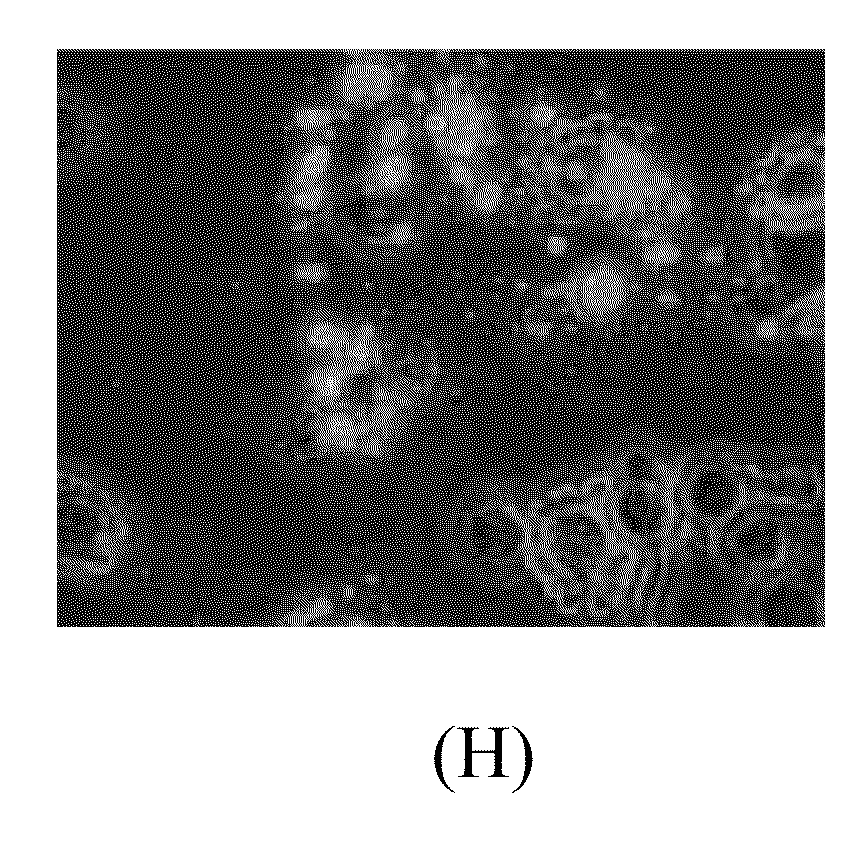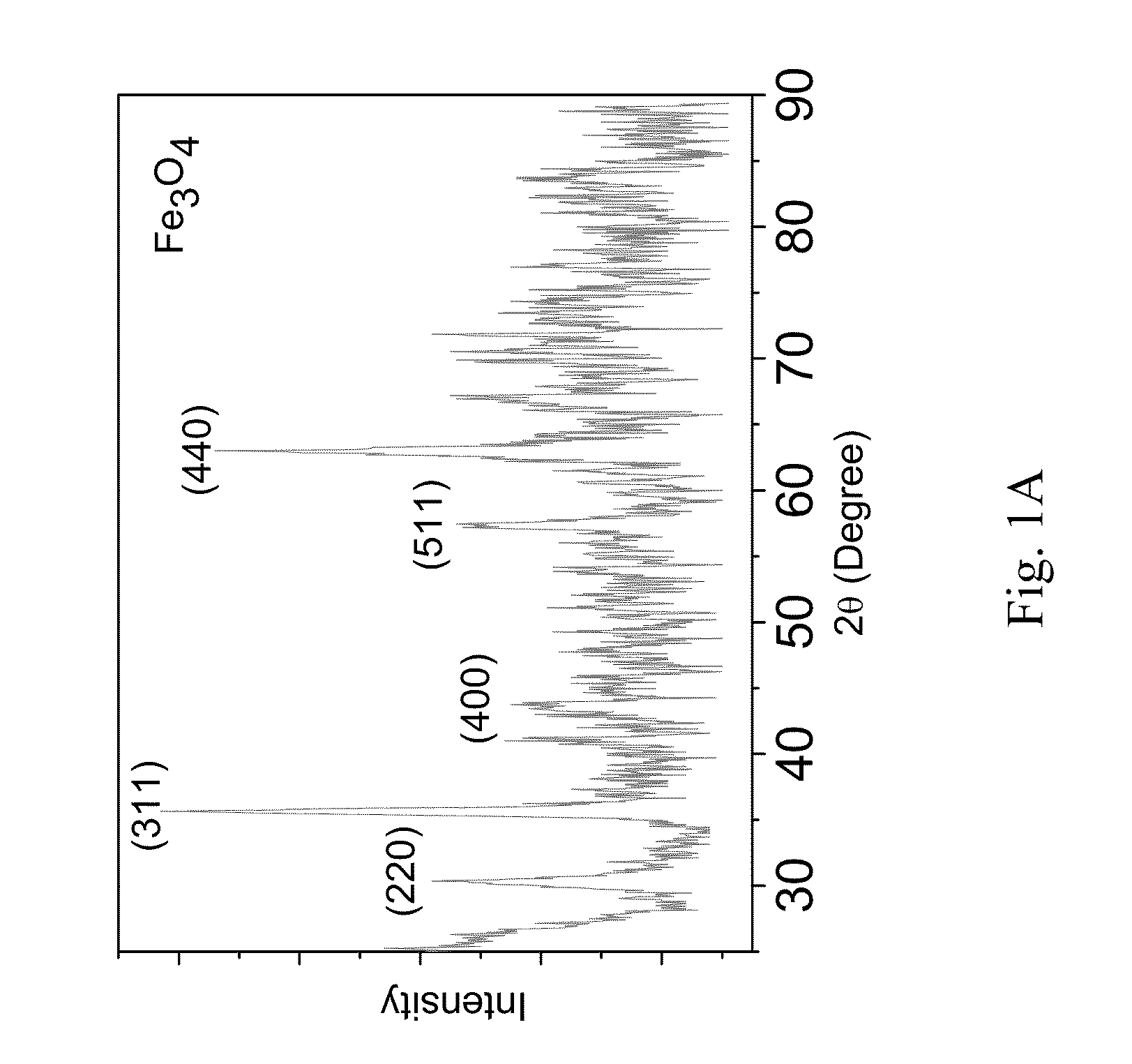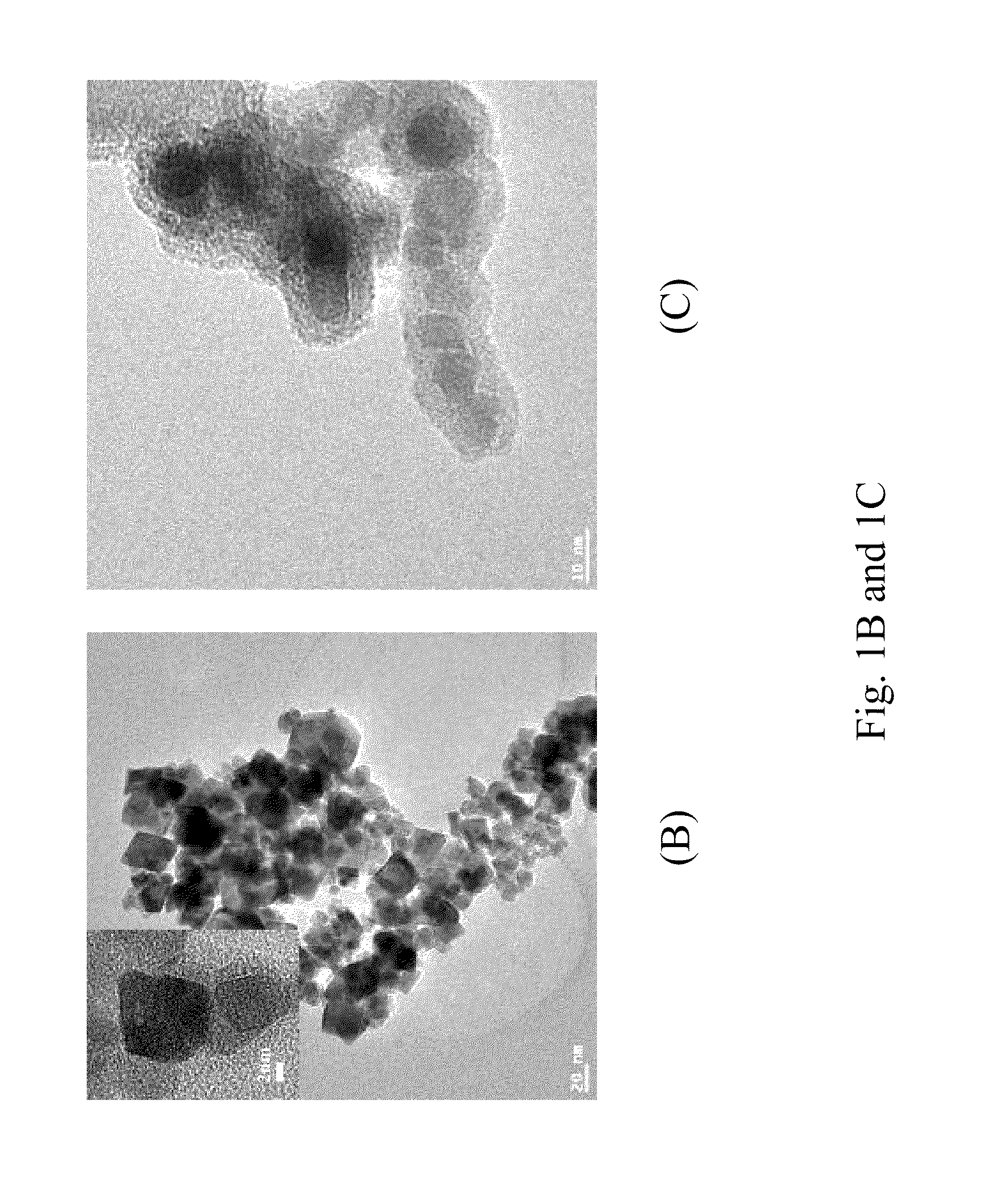MULTIFUNCTIONAL Fe3O4 CORED MAGNETIC-QUANTUM DOT FLUORESCENT NANOCOMPOSITES FOR RF NANO-HYPERTHERMIA OF CANCER CELLS
a fluorescent nanocomposit and multifunctional technology, applied in the field of magnetic-quantum dot nanocomposites, can solve the problems of little known about the potential of pancreatic cancer therapy in treating patients
- Summary
- Abstract
- Description
- Claims
- Application Information
AI Technical Summary
Benefits of technology
Problems solved by technology
Method used
Image
Examples
example 1
Materials
[0103]Tetraethylorthosilicate (TEOS), 3-mercaptopropionic acid (MPA), 3-mercatopropyl-trimethoxysilane (MPS), ammonium ferrous sulfate (99.7%), iron chloride (99.0%), sodium hydroxide (96%), sodium citrate (98%), cadmium dichlorate (99.0%), selenium (99.95%), absolute ethanol (99.7%), ammonia (30 wt. %), zinc acetate (99.0%), sodium sulfide (98%), and acetone (99.5%) were all purchased from Aldrich and used as received unless otherwise noted.
Preparation of Iron-Oxide Magnetic Nanoparticles
[0104]Iron-oxide (IO, Fe3O4) nanoparticles were synthesized as previously described[9]. Briefly, 5 mL of 0.5M ammonium ferrous sulfate and 10 mL of 0.5M iron chloride solution were mixed together. Then 15 mL of 3M sodium hydroxide solution was dropped into the solution under mechanical stirring and nitrogen protection. The additional sodium hydroxide kept a consistent concentration of hydroxide so as to obtain uniform nanoparticles. The resulting black precipitate was isolated with a magne...
example 2
X-Ray diffraction (XRD)
[0108]Powder Fe3O4 XRD data was recorded on a Bruker AXS D8 advanced diffractometer (Cu-Ka) in h / h geometry with a secondary monochromator. The patterns were recorded over 10°<2θ<100°. The results were analyzed with EVA software.
TEM and EDX Analysis
[0109]Transmission Electron Microscopy (TEM) and Energy Dispersive X-ray (EDX) analysis were collected on a JEM2100F TEM (JEOL INC.) with an acceleration voltage of 200 kV. For the analysis, NP powders were dispersed in 2-propanol and sonicated for 10 minutes. A few drops of the suspension were deposited on a TEM grid. This preparation was then dried and evacuated before analysis.
UV-Vis-NIR Spectroscopy and Fluorescence Spectroscopy
[0110]IO, QDs, and IQ nanomaterials were measured in a 10 mm path length quartz cells using a UV-Vis-NIR absorption spectrometer (Varian Cary) and a fluorescence spectroscope (Varian Cary Eclipse) at room temperature to record the spectra of the various solutions involved in the synthesis...
example 3
Human Pancreatic Cancer Cell Culture
[0118]A human cancer cell line, Panc-1, was obtained from the American Type Culture Collection. The cells were maintained in Dulbecco's modified Eagle's medium (DMEM, GIBCO) supplemented with 10% fetal calf serum, 2% L-glutamine, 1% penicillin, and 1% streptomycin stock solutions. The media were changed every three days, and the cells were passaged by trypsinization before confluence.
MTT Assay
[0119]The colorimetric MTT (3-(4,5-dimethylthiazol-2-yl) 2,5-diphenyl tetrazolium bromide, Sigma) test was used to assess cell metabolic activity based on the ability of the mitochondrial succinate-tetrazolium reductase system to convert the yellow dye (MTT) to a blue-colored formazan. The metabolic activity of the cell is proportional to the color density formed. Briefly, following Panc-1 cell incubation with IQ for 24 hours, the media was aspirated and replaced with 90 μl of serum-free media. 10 μl of an MTT stock solution (5 mg / ml) was added to each well f...
PUM
| Property | Measurement | Unit |
|---|---|---|
| Temperature | aaaaa | aaaaa |
| Fraction | aaaaa | aaaaa |
| Time | aaaaa | aaaaa |
Abstract
Description
Claims
Application Information
 Login to View More
Login to View More - R&D
- Intellectual Property
- Life Sciences
- Materials
- Tech Scout
- Unparalleled Data Quality
- Higher Quality Content
- 60% Fewer Hallucinations
Browse by: Latest US Patents, China's latest patents, Technical Efficacy Thesaurus, Application Domain, Technology Topic, Popular Technical Reports.
© 2025 PatSnap. All rights reserved.Legal|Privacy policy|Modern Slavery Act Transparency Statement|Sitemap|About US| Contact US: help@patsnap.com



